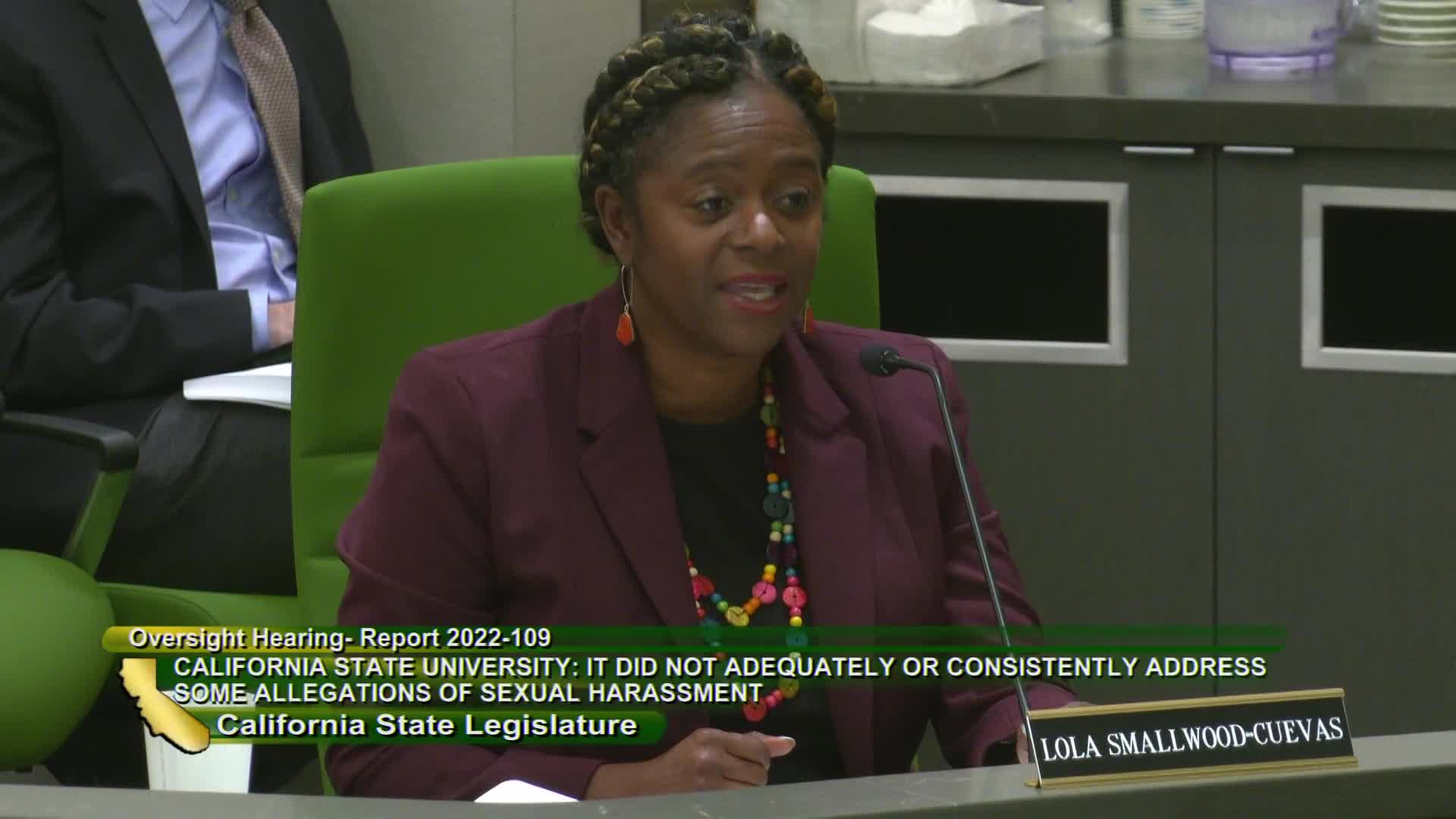California lawmaker calls for action to protect women of color from workplace harassment
August 31, 2023 | California State Assembly, House, Legislative, California
This article was created by AI summarizing key points discussed. AI makes mistakes, so for full details and context, please refer to the video of the full meeting. Please report any errors so we can fix them. Report an error »

In a recent joint hearing held by the California State Assembly, critical discussions unfolded regarding the safety and equity of educational environments, particularly for vulnerable populations. The meeting, which brought together members of the Joint Legislative Audit Committee and the Assembly and Senate Education Committees, highlighted pressing issues surrounding sexual harassment and discrimination within educational institutions.
A key speaker emphasized the importance of partnerships between commercial building owners and workers, advocating for innovative approaches to empower employees as active participants in reporting and addressing workplace violations. This initiative, which aims to transform workers into informed advocates, seeks to create a safer environment, especially for women of color who are disproportionately affected by such issues.
The speaker lamented the lack of progress over the past decade, noting that despite previous audits and discussions, there has been little action to foster collaboration among workers, students, and administrators. Instead, the atmosphere has been marred by blame and finger-pointing, hindering meaningful change. The call for accountability was clear: without a concerted effort from leadership to address these systemic failures, the cycle of harassment and discrimination would persist.
The conversation also touched on the critical need for equitable access to education for marginalized groups. The speaker pointed out that many women, particularly women of color, face barriers that prevent them from pursuing educational opportunities. These barriers are compounded by experiences of harassment and discrimination, which often lead to absenteeism and disengagement from academic pursuits.
As the hearing progressed, the urgency for legislative action became evident. The speaker urged the administration to take responsibility for creating safe spaces within educational institutions, stressing that without such environments, the pathway to education for many vulnerable students would remain obstructed. The message was clear: the time for action is now, and the stakes are high for those who rely on these systems for their future.
In conclusion, the discussions at the joint hearing underscored a critical juncture for California's educational landscape. With the spotlight on safety, equity, and accountability, the path forward will require a unified commitment to protect and empower all students, particularly those from marginalized communities. The hope is that this meeting will serve as a catalyst for meaningful change, ensuring that educational institutions become safe havens rather than barriers to success.
A key speaker emphasized the importance of partnerships between commercial building owners and workers, advocating for innovative approaches to empower employees as active participants in reporting and addressing workplace violations. This initiative, which aims to transform workers into informed advocates, seeks to create a safer environment, especially for women of color who are disproportionately affected by such issues.
The speaker lamented the lack of progress over the past decade, noting that despite previous audits and discussions, there has been little action to foster collaboration among workers, students, and administrators. Instead, the atmosphere has been marred by blame and finger-pointing, hindering meaningful change. The call for accountability was clear: without a concerted effort from leadership to address these systemic failures, the cycle of harassment and discrimination would persist.
The conversation also touched on the critical need for equitable access to education for marginalized groups. The speaker pointed out that many women, particularly women of color, face barriers that prevent them from pursuing educational opportunities. These barriers are compounded by experiences of harassment and discrimination, which often lead to absenteeism and disengagement from academic pursuits.
As the hearing progressed, the urgency for legislative action became evident. The speaker urged the administration to take responsibility for creating safe spaces within educational institutions, stressing that without such environments, the pathway to education for many vulnerable students would remain obstructed. The message was clear: the time for action is now, and the stakes are high for those who rely on these systems for their future.
In conclusion, the discussions at the joint hearing underscored a critical juncture for California's educational landscape. With the spotlight on safety, equity, and accountability, the path forward will require a unified commitment to protect and empower all students, particularly those from marginalized communities. The hope is that this meeting will serve as a catalyst for meaningful change, ensuring that educational institutions become safe havens rather than barriers to success.
View the Full Meeting & All Its Details
This article offers just a summary. Unlock complete video, transcripts, and insights as a Founder Member.
✓
Watch full, unedited meeting videos
✓
Search every word spoken in unlimited transcripts
✓
AI summaries & real-time alerts (all government levels)
✓
Permanent access to expanding government content
30-day money-back guarantee

